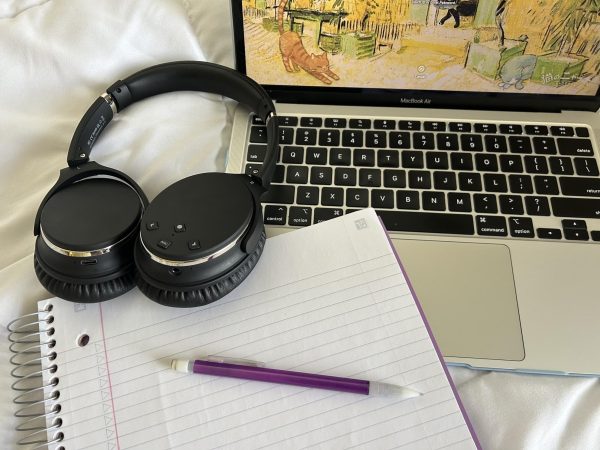Number of young wine drinkers grows
November 19, 2009
Curiosity and health perks among reasons
Liz Whiteman, senior managerial marketing major, gathered with her friends in an Eagle’s Landing apartment on a Tuesday night.
The smell of spaghetti filled the air as she cooked and her guests munched on pita and humus.
Each of them had meetings to attend, an accounting test to study for and a job to go to. Dinner and a glass of wine was just a quick way to hang out and talk before they had to go their separate ways.
When dinner was ready, Whiteman showed the others how to properly pop the cork on a bottle of Funky Llama white wine, a task she had learned in wine tasting class.
Anthony Carlucci teaches five wine courses in the Geography department this semester. He begins one Wednesday night class – Geography of Wine – by discussing an article he read in a magazine.
“Twenty-five percent of life longevity is determined by your genetics and 75 percent is largely determined by the choices that we make everyday,” Carlucci said.
Carlucci suggests de-stressing and eating less. As an enologist teaching a wine tasting class, he has one more suggestion to offer his students.
“One more thing to consider, studies suggest drinking wine in moderation is a powerful factor to living longer,” Carlucci continued.
Carlucci grew up in an Italian family and had his first sips of wine around age 13.
“Now and then a small glass of wine with pasta, that’s where I basically had my first sips at that time,” Carlucci said. “It wasn’t like I was drinking to drink; I was doing it like my dad, an older person.”
Carlucci said today “twenty-somethings” are the quickest growing demographic in the wine industry.
He said he believes the younger generation sees drinking wine as he did: sophisticated, mellow and trendy.
“They see it online, the news about wine, and health issues have exploded in America, in magazines – it’s everywhere,” Carlucci said.
Forty-seven percent of millennials, those between the ages of 14 and 28, are drinking more wine, according to a 2007 survey of consumer trends in the U.S. wine market, conducted by the Wine Market Council.
Dana Nelson, co-owner of Viking Vineyards and Winery in Kent, has noticed the increased interest in wine from the younger generation.
“We’re close to two universities, and Kent does bring some classes in here, so that’s helping to spread the word to the younger generation,” Nelson said. “Younger people are just more curious.”
It’s not just wineries close to college campuses experiencing the interest, though. Nelson said fellow winery owners have also noticed the increase in curiosity of younger generations.
Latisha Carr, who is currently taking Carlucci’s wine tasting class, began drinking wine about seven months ago after realizing the health benefits associated with it.
“I found out that wine is healthier for you, and actually, it tastes a lot better than liquor to me,” Carr said.
Red wine has resveratrol and quercetin, an anti-cancer agent that helps lower bad cholesterol and clean out blood vessels, according to researchers at the University of Toronto.
“Because wine is very low in PH, it will help kill things that you might get, God forbid, in a restaurant that can give you food-borne illnesses,” Carlucci said. “If you go in a restaurant you should always have a glass of wine, for sure. They’re not always as clean as you think.”
Researchers Azlin Mustapha and Atreyee Das, from the University of Missouri-Columbia, found that red wines – Cabernet, Zinfandel and Merlot, in particular – helped defend against food-borne pathogens.
Carlucci and Nelson both offer advice for those just beginning to experiment with wine.
Carlucci says, being a soda pop generation, younger wine drinkers may tend to lean towards sweeter wines, such as Riesling, the quickest growing white wine in the last few years.
“The reason is, Rieslings tend to be sweeter, fruitier and easier to drink,” Carlucci said.
Nelson said Viking Vineyards offers a great semi-dry Riesling for beginners called Glacier Myst.
“Riesling is a wine most people are familiar with because you see it on menus at restaurants all the time,” Nelson said. “It’s just unfortunate that most people think Riesling is always sweet but it doesn’t have to be.”
Carlucci said as a wine drinker’s palate matures, he or she will be able to slowly move onto to drier wines, such as Sauvignon Blanc, Chardonnay or a Merlot.
He also advises wine drinkers to practice sensory evaluation when drinking new wines.
“It’s what helps you learn about wine, educate you about wine and makes you enjoy wine more,” Carlucci said. “It’s not something you drink and chug.”
Contact features correspondent Kristyn Soltis at [email protected].























